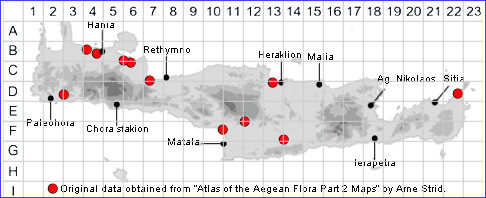SPECIES DESCRIPTION
LOTUS PALUSTRIS
Family and Genus:- See- LEGUMINOSAE/Sect. LOTUS/L. corniculatus group.
Common Names:- None
Homotypic Synonyms:- Lotus angustissimus subsp. palustris
Meaning:- Lotus (Gr) The ancient name for various leguminous plants.
Palustris (L) Of swampy ground.
General description:- Perennial, usually patent-pilose.
Stems:-
1) 50-100 cm, procumbent or ascending, pubescent to villous.
Leaves:-
1) Leaflets, 5-foliolate, large (14-20 x 6712 mm), elliptic-ovate, apiculate.
a) lower pair not much smaller than the others.
Flower:-
1) 2-4, on a peduncle several times longer than the subtending leaf.
2) Bracts, usually 3, unequal.
3) Calyx, with subequal, linear-lanceolate but broad-based teeth slightly longer than
the tube.
4) Corolla, 8-11 mm,
a) beak of the keel, short, with a slightly incurved tip.
Fruit:-
1) Legume, 15-22 x 1.5-2.5 mm, linear, straight, terete.
Key features:-
1) Leaflets, 14-20 x 6-12 mm elliptic-ovate.
2) Corolla, 8-11 mm, not more than 1.5 times as long as the calyx.
Habitat:- Damp to wet, often saline meadows near the sea, occasionally to 400 m.
in ruderal habitats and wet spots in olive groves
Distribution:- Sparse distribution across the Aegean area. Widespread through
Portugal and S Spain. through N Africa to Syria Anatolia and Cyprus. Limited
distribution on Crete.
Flowering time:- May-July.
Photos by:- Charalambos Chiotelis

